For risks created by filming or recording in vehicles (see Vehicles: Recording in, from and around)
What Can Go Wrong?
- Road traffic accident (e.g. due to distraction, inexperience, fatigue, unsafe driving/cycling standards).
- Falls from bicycles caused by poor road surfaces e.g. potholes and/or unsafe driving/cycling standards.
- Mechanical break down.
- Lost or stranded in poor weather.
- Hurt by unsecured kit during sudden stops/collisions.
- Attacked (physically/verbally) by another road user.
- Inadequate emergency or first aid response.
Legal/�鶹�� Requirements
- Drivers of vehicles must have a valid driver’s declaration
- Manager to ensure drivers have a current licence and check it is valid for the vehicle
- Must comply with local legislation (Highway code in UK)
- Hand-held mobile phones must not be used when driving
- Hands free mobile phones can only be used where there is a need to pass on urgent information about the destination (e.g. the presence of a specific threat or need to be kept up-to-date)
- Satellite navigation aids (including mobile phone apps) may be used provided they do not distract the driver or significantly obstruct their view of the road – they must be programmed when parked, not on the move (see RoSPA guidance)
- Business insurance is required when driving your own vehicle for work
- Those under 21 are not insured to drive for the �鶹��
- Drivers between 21-23 require a specific risk assessment.
- It is �鶹�� policy that anyone who has reasonable fear for their own safety may refuse to travel with a specific driver or in an un-roadworthy vehicle.
- European legislation requires that after 4½ hours driving, a driver must take a break of at least 45 minutes. This break may be replaced by a break of at least 15 minutes followed by a break of at least 30 minutes each distributed over the period. During a driving break a driver must not undertake any further work.
Control Measures
Planning
- Drivers must be fit to drive and not under influence of alcohol, recreational drugs or prescription drugs that could affect the driver’s concentration.
- Ensure drivers are competent for the driving task, particularly those with less experience. Line managers to assess by considering the type of vehicle, location and journey and the driver’s experience with similar vehicles in similar road conditions
- Drivers to complete the �鶹�� online driver assessment and training on request.
- Use hire cars where possible and book via �鶹�� Procurements "Self Drive Booking"
- Ensure vehicle safety checks are being carried out (see Safety Short in Useful Documents)
- When using own vehicle ensure MOT or equivalent standard in place and it is serviced in line with manufacturers service intervals.
- Plan the route and use satellite navigation, maps and/or local knowledge.
- Take account of weather forecast and select appropriate vehicle for location/terrain/weather. See Weather Conditions topic for more details.
- If poor weather expected or driving in remote areas make arrangements for regular contact with base and leave route with base, and take appropriate kit and supplies (e.g. shovel, tow ropes, food, water, hot drinks, warm clothing, charged mobile phone, torch, blanket, first aid kit etc.)
Whilst Driving
- Driver to familiarise self with the car and route
- Driver to visually check the vehicle including tyres, fuel, windscreens and lights as described in the vehicle checklist. A Vehicle Inspection Checklist is available.
- The driver should find a safe place to stop if they feel tired/sleepy and inform line manager/deployer. Also, read the topic Tiredness and Fatigue.
- On longer journeys share the driving amongst the team and ensure the driver has regular breaks (e.g. every 2 hours) and the driving time is considered as part of the schedule.
- Give the drivers the option of staying overnight rather than complete a long journey at the end of a working day.
- Drivers should not be asked to drive after working a 12 hour day or more (reduce to 11 hours if their driving time exceeds 4 hours on that day).
- Drivers should not drive for more than 10 hours in total during a day.
- Secure equipment (lanyards, straps, webbing) and ensure vehicle is suitable for the equipment being transported. Where kit in car boot put backseat seat belts on. Also, read the topic Manual Handling.
- Ensure valuable items (ie camera equipment) aren’t on display and lock doors when driving in town, if appropriate, though not on high speed roads.
- Where fitted, seatbelts must be worn. When selecting cars , select those with seatbelts. (where possible)
Driving outside the UK
- Drivers to understand local road rules and hazards.
- It is unwise to drive at night where there are animals on the road, night traffic without lights, poor visibility, in remote areas, bad road conditions and potential for crime. Where this is the case complete a specific risk assessment.
- Select suitable vehicle from a reputable supplier.
- Select cars with functioning seatbelts for all occupants where possible and wear seatbelts where fitted
- When appointing drivers check their driving skills and experience through licence, training details, references.
- If using drivers inform them of expectations on their driving standards, speed and behaviour. Nominate someone in the vehicle to voice concerns if needed.
- Don’t choose routes that involve known problem areas.
- Ensure the vehicle contains a first aid or trauma kit, local emergency service numbers and the location of local hospitals.
- Ensure the vehicle carries the compulsory kit required in that country.
- Ensure that every driver is insured for third party liability which satisfies local compulsory insurance obligations (and is to a level of at least $1million per occurrence if in North America).
- Ensure that the vehicle is insured for loss or damage on as wide a basis as the vehicle supplier offers.
- Seek further motor insurance advice from �鶹�� insurance if unsure.
- Reporting accidents - report all vehicle-related accidents to motor claims handlers and on the myRisks tool.
- If hiring local car and driver, make some basic checks like drivers license and seat belts; read and apply the guidance about Employing Drivers or Contracting Driving Services.
Cycling for Work
The �鶹�� has a legal duty to put suitable arrangements in place to manage the H&S risks associated with this activity. The HSE recommend a common sense & practical approach.
Where staff members cycle for work purposes, Line Managers must risk assess their plans and ensure there are suitable controls in place. There is a useful checklist for Line Managers when assessing the risks associated with cycling/driving for work purposes. See HSE’s Driving and Riding Safely at Work, under Recommended Links below.
Whilst Cycling
- Comply with Road Traffic legislation when on public road. See Highway Code Rules for Cyclists (59-82), under Recommended links below.
- Where appropriate chose a safe route with cycle lanes and avoid travelling at busier times.
- Ensure bicycle is fit for purpose, roadworthy and suitably maintained, particularly tyres and brakes.
- Gradually build up your confidence; cycling for commuting on busy public roads can be very different to cycling for leisure.
- Always wear appropriate clothing for the weather and a cycle helmet for all journeys.
- Consider poor weather conditions, such as snow or high winds, when planning journeys.
- Do not cycle under the influence of alcohol or drugs.
- Cyclists must not use a hand-held mobile phone whilst cycling
- Ensure you are always clearly visible to other drivers by wearing high visibility/reflective clothing.
- Always have functioning lights on the front and rear of the bicycle.
- Whist cycling is green & healthy it potentially is also more risky, it is your individual choice to cycle for work purposes and the �鶹�� does not have any liability for the journeys you undertake whilst cycling for commuting purposes.
- Report all road traffic incidents you are involved in (including any near misses).
Division Specific Issues
TV and Radio
- As with mobile phones, walkie-talkies must not be operated by drivers / cyclists on the public highway
- Work experience staff are not allowed to drive on behalf of the �鶹��
- Where driving is part of the Runner’s role their competency must be checked first and approved by the Producer. Productions should first look at other options before using Runners as drivers.
- Incorporating Radio OB MS;
- G001-09 Use of Mobile Phones
- M004-09 Driving of Vehicles on �鶹�� Duty
News
- According to the RoSPA, hands-free phone conversations when driving should be considered to be as dangerous as when holding a mobile phone, as the driver tries to visualise the caller or situation being spoken about, distracting them from the complicated task of driving
- Where it is decided that hands-free kit is needed in a vehicle for operational reasons (e.g. to communicate a specific threat, deployment alteration), the manager should justify this increased safety risk through risk assessment
- Where they are fitted, drivers should still find a safe place to park before making outgoing calls. Received calls should only be taken where the driver feels it is safe to do so (e.g. open road, low speeds) - if in heavy traffic, the phone should be diverted to voicemail and these responded to when safely parked. All received calls when driving should be kept short.
FAQs/Did You Know?
- Up to a third of all road traffic accidents involve someone who is at work
- All UK �鶹�� vehicles are covered by roadside assistance arrangements
- �鶹�� Bureaux can help you find out about local road rules and hazards
Useful documents
Recommended �鶹�� links
Recommended links
Vehicle topics
-
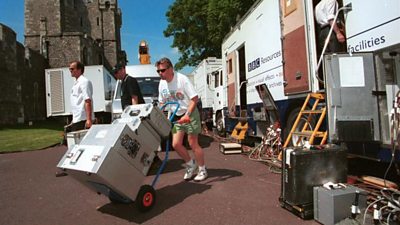
Broadcast Vehicles
A guide to satellite vehicles, radio cars and uplink vehicles -
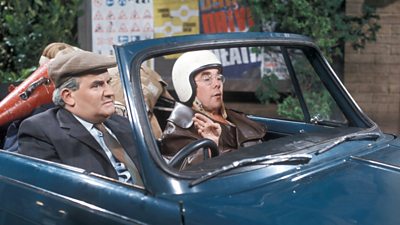
Driving & Cycling for Work
Our safety guideline to driving safely and legally on the public highway for the purposes of �鶹�� work. -
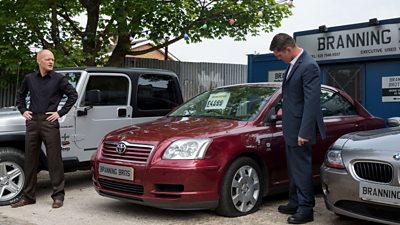
Safety Short: Vehicle checks
�鶹�� Safety's Safety Short on Vehicle Safety Checks. -
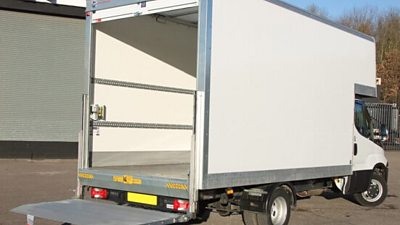
Tail Lifts
�鶹�� Standard and Guidance on the safe use of vehicle tail lifts -
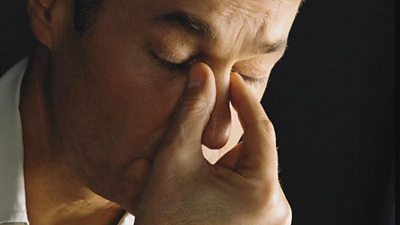
Tiredness and Fatigue
A guide to the scheduling and management of your team’s working hours. -
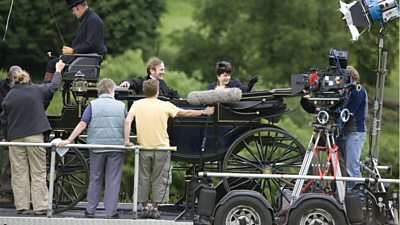
Vehicles: Recording in, from and around
A guide to recording a driver or passengers from within a moving vehicle. -
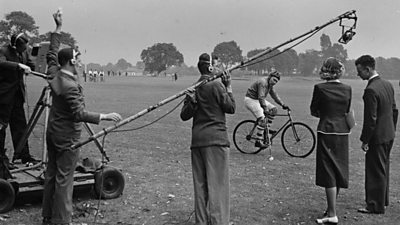
Vehicles Used in Sports Coverage
A guide to the safe use and provision of vehicles used in sports coverage, including quad bikes and golf buggies. -

Winter conditions - driving and location safety
This safety guidance covers the additional risks to driving during harsh winter conditions in the UK.
More from SSR
-
Your platform to record accidents, risk assessments, assurance monitoring and inspections
-
Safety Equipment Stores
Just one number to call: 020 3614 5155 -
�鶹�� Safety Guidelines
An A-Z of �鶹��'s Health and Safety Guidelines -
Safety Advice Line: 0370 411 0464 Email: safety@bbc.co.uk
Events guidance - key links:
- Exhibitions
- General Guidance
- Indoor Location Recce Checklist
- Outdoor Location Recce Checklist
- Major Incidents & Emergency Planning
- Marketing and Promotional
- Noise Exposure
- Planning and Management
- Responsibilities
- Responsibilities Form
- Laser Lighting Effects
- Strobe Lighting
- Temporary Stages and Rostra
Health topics - key links:
- (�鶹�� network only)
- Contributors Fitness to Participate
- Display Screen Equipment (DSE)
- (�鶹�� network only)
- First Aid and Welfare on Location
- International Travel - Risks & Health
- Manual Handling
- Mental Health: Homepage
- (�鶹�� network only)
- Personal Health and Wellbeing
- Pregnancy
- Psychological Trauma Support & Trauma Risk Management (TRiM)
- Tiredness and Fatigue
- Travel Health Contacts
�鶹�� High Risk - key links:
- CBRN and Industrial Spills
- Covert Filming
- Crisis Management and Security Support
- Demonstrations, Protests and Crowds
- Disaster Coverage
- Door Stepping
- (�鶹�� network only)
- (�鶹�� network only)
- Public Order
- Safety Equipment Stores
�鶹�� Journalism - key links:
�鶹�� Productions - key links:
- Aerial Filming and Airfields
- Animals: Displaying and handling for performance
- Boats: Working on
- Children and Young People
- Driving
- Electrical Equipment and Systems
- First Aid and Welfare on Location
- Food Safety (Cooking and Catering)
- Remote Location Working
- Roads and Streets: Working by
- Security of Productions on Location
- Stunts
- Tiredness and Fatigue
- Unmanned Aerial Systems (UAS aka Drones)
- Vehicles: Recording in, from and around
- Working at Height: Mobile Elevating Work Platforms
- Working at Height: Tower Scaffolds
�鶹�� Radio - key links:
- (�鶹�� Network only)
�鶹�� Security - key links:
�鶹�� Sport - key links:
About this site
This site describes what the �鶹�� does in relation to managing its health, safety and security risks and is intended for those who work directly for the �鶹��.
It is not intended to provide instruction or guidance on how third parties should manage their risks. The �鶹�� cannot be held liable for how this information is interpreted or used by third parties, nor provide any assurance that adopting it would provide any measure of legal compliance. More information
Some links on this site are only accessible when connected to the �鶹�� network
